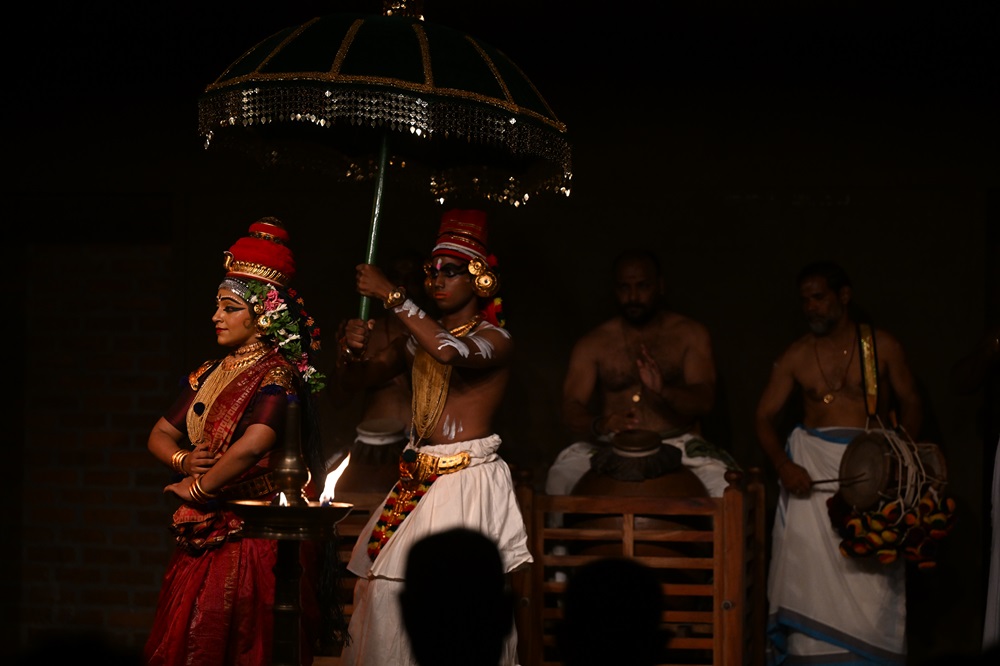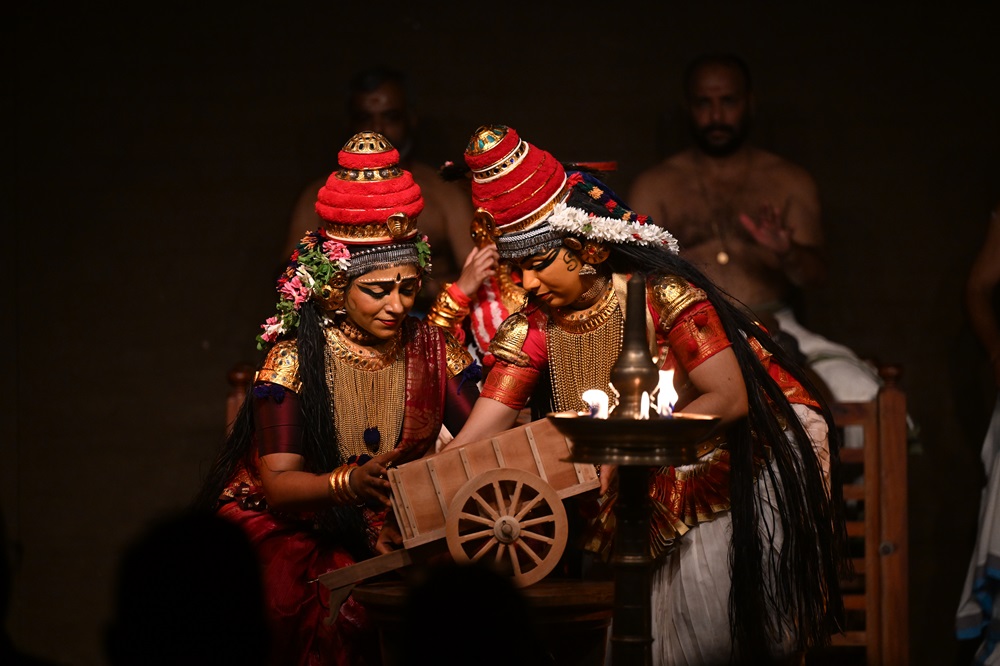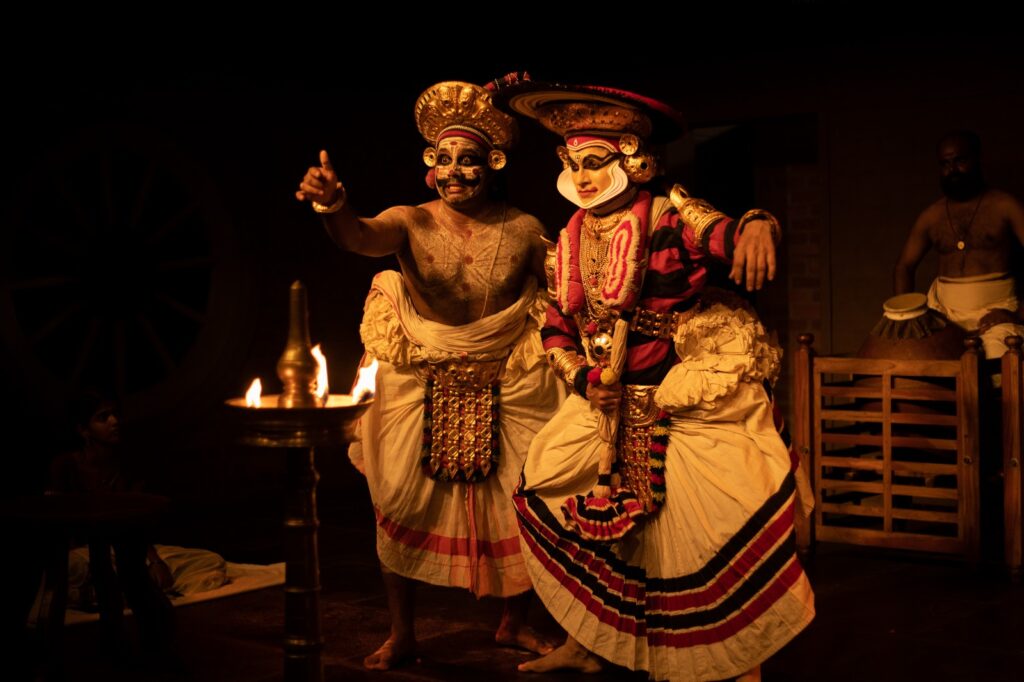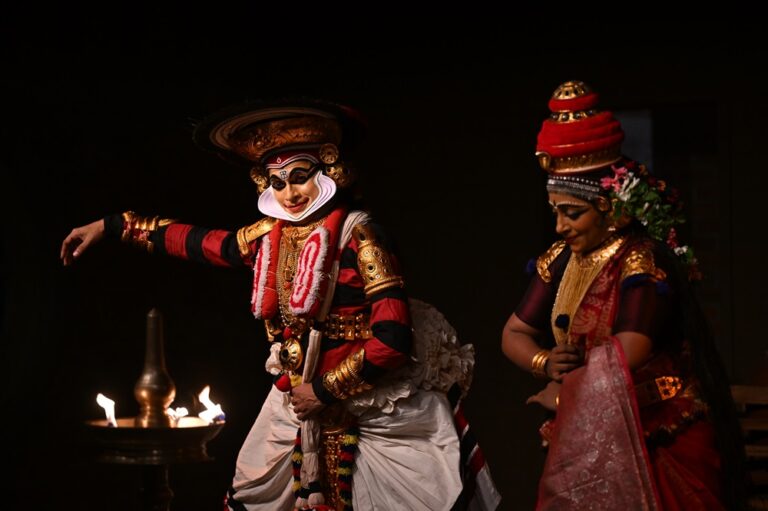Guru G. Venu’s bold production of Mricchakatikam explores new thematic grounds while staying rooted in the traditional Kutiyattam idiom.
Among the Kutiyattam exponents, Guru G Venu of Natanakairali stands out for his contributions for enriching the repertoire of Kutiyattam. While Kalidasa, the most popular Sanskrit poet in the western countries, remained anathema for the Chakyars, Venu created “Abhinjana Sakuntalam’ which was staged in all the major cities in the world.

The thirteen-hour play thus won international acclaim. Vikramorvaseeyam was another Kalidasa play. He also did Oorubhangam of Bhasa. For Nangiarkoothu the prolific choreographer choreographed Narasimhavatharam, Seethaparithyagam and Soundaryalahari. His latest in Kutiyattam is Shudraka’s Mricchakhatika, the Sanskrit play that belongs to the fifth century.

Over the past four months, his institution at Irinjalakuda, Natanakairali, has been humming with activities in which outstanding Kutiyattam artistes across Kerala were involved for its production. And when the final product was staged for fine-tuning, one could discern a sense of satisfaction bloom on Venu’s countenance.
People’s stories in a sacred space
What make Mricchakatikam different from other Kutiyattam plays are the theme and the characters. While the dramatis personae in the traditional Kutiyattam plays are from epics and noble, Mricchakatikam anchors on down-to- earth people like a courtesan, thieves, gamblers and the like.

“Here, a clear democratic objective is presented through the story in which the rule of an unjust king is replaced with a capable ‘commoner’. The play carries a deep and significant sentiment of transforming a ‘clay cart’ into one of gold and this is the spirit and inner meaning of the conceptual production”, Venu explained.
That the three-and-an half-hour play has been produced banking on the typical, traditional format of Kutiyattam, speaks for the choreographic ingenuity of Venu. Moreover, it is a play in full. But Venu opined that the play will be edited for a lesser duration.
A choreographic feat
Right from ‘arangutali’ in the beginning, one is compelled to sit through with eyes glued on the stage as interesting events unfold. The feat of ‘panchangam’ executed by the heroine Vasanthasena (Kapila Venu) and the hero Charudatta (Suraj Nambiar) is especially noteworthy. Though their movements are in perfect sync, one could notice the subtle differences in the style of male and female actors here.

Vasanthasena offers the ‘Mudiyakkitha,’ (closure of the performance) reciting the ‘Bharathavakyam,’ (the closing lines) making propitiatory offerings, praying that the Earth be filled with everything auspicious and prays for the well being of all members of audience, indicating the completion of a play in full.
The actors included, apart from Kapila and Suraj Nambiar, Sankar Venkateswaran (Samvahaka), Pothiyil Renjith Chakyar (Karnapooraka), Margi Sajeev Narayana Chakyar (Madhura), Margi Anjana S Chakyar (Radhanika), Nepathya Srihari Chakyar (Sarvilaka), Kalamandalam Jishnu Pratap (Maitreya), Aran Kapila( Rohasena) and Saritha Krishnakumar (Madanika).
As for the percussionists, they included Kalamandalam Rajeev, Kalamandalam Hariharan, Kalamdnalam Narayanan nair and KalamandalamVineesh – all Mizhavu and Kalanilayam Unnikrishnan (Edakka). Venu roped in Kurumkuzhal , used traditionally, which was played by P Vaishakh.
The play also witnessed the advent of the young boy Aran, 11-year-old son of Kapila. Perhaps it was for the first time in the history of Kutiyattam that a son was seen seated on his mother’s lap in the play!
Said Venu, “The world premiere of the play is to take place at Rangashankara, Bengaluru on July 1and 2”.
Photos: Manoj Parameswaran




